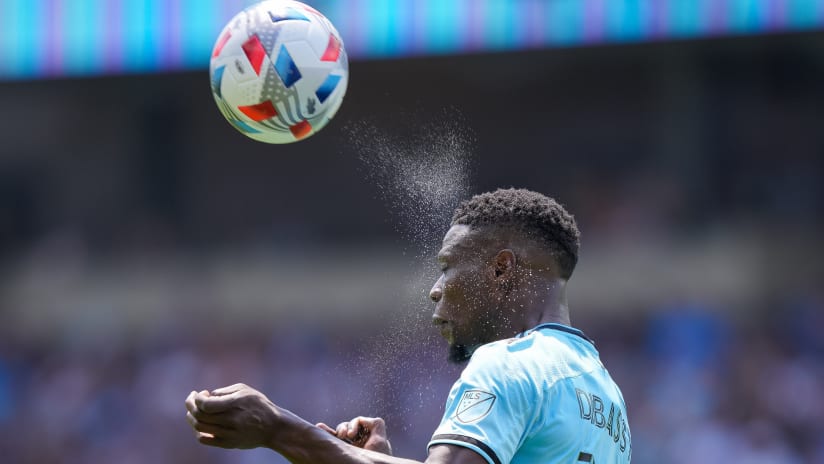Goals added (g+) is a nifty stat. If goals show you what happened, and expected goals (xG) show you what probably should have happened, goals added seeks to show you everything that went into getting to the point where something should have happened. American Soccer Analysis — who developed the metric — describes it as measuring “a player’s total on-ball contribution in attack and defense … by calculating how much each touch changes their team’s chances of scoring and conceding across two possessions.”
Now, if I were to ask you who on Minnesota United is leading in g+ based on that description, what would you say? Emanuel Reynoso? He leads the team in dribbles, key passes, expected assists (xA) and probably a bunch of other advanced analytics. Robin Lod? He leads the team in goals, is second in xG+xA and does a lot of work without much of the ball — the picture of efficiency. Or maybe an underrated cog like Wil Trapp or Romain Metanire?
The answer, you may be surprised to learn, is Bakaye Dibassy, and he’s the leader by a considerable amount. The gap between his 1.61 g+ and Robin Lod’s 0.99 in second is roughly the same as the one from Lod down to Brent Kallman’s 0.33 in seventh.
To try to figure it out, I reached out to ASA’s John Muller, and his answers revealed a lot about both the possibilities and limitations of metrics like g+, especially when it comes to assessing defense.
“I actually don't think that g+ is very useful for measuring defense at the individual level,” he began, “but it's great at the team level.” (For comparison, Minnesota United is fourth in both goals added against and goals added differential — that is, quite good defensively.)
“The model is built on event data, which can't see what's happening off the ball, so it's not very precise over a single game, but over enough minutes it's good at estimating the scoring probabilities in any given situation on the field,” he continued.
The major hurdle for the metric when it comes to defense is that defense in soccer is largely predicated on keeping danger from ever happening — a thing that is vanishingly hard to measure with math that follows the ball.
“The most valuable possession a player could break up — and thus the most g+ he could earn for a defensive action — would be a goal line clearance, since the other team's chance of scoring by that point is nearly 100%,” said Muller. “But a team that's making a lot of goal line clearances is probably playing terrible defense. And since event data can only tell you what's happening on the ball, you don't really know which defenders bear the responsibility for the terrible defense that let the ball reach the goal line in the first place.”
Think of it this way: For an attacking player to nutmeg a centerback for a close range goal, a lot has to have gone wrong already. The bottom line is that individual g+ for a defender can be extremely noisy, with certain actions like drawing a penalty counting for a lot. Add in the fact that the metric is normalized against average values for different positions and edge cases can get complex.
“Attacking positions have wider g+ distributions, so it's easier to stand out one way or another,” said Muller. “The stuff defenders do is typically lower-stakes as far as the model is concerned, so centerbacks tend to stick closer to the average baseline of zero for any given g+ component.”
Digging into these components can actually help show some of where and how Dibassy has been so good this season. The overall g+ stat is made up of measurements of six different kinds of actions: dribbling, fouling, interrupting, passing, receiving and shooting. The bulk of Dibassy’s 1.61 g+ (among centerbacks and fullbacks he is ninth in the league) comes from a 1.09 rating in interrupting.
“My guess is that Dibassy is above average here because he's an active box defender with a lot of clearances and other last-ditch defensive actions that break up valuable attacks,” Muller said. “I wouldn't necessarily use that to argue that he's an underrated defender but I do think it captures something meaningful about how he's helping his team.”
This would seem to track with what anyone who’s been watching the team this season has seen. It’s possible that Michael Boxall — as de facto leader of the backline — does more to keep fires from cropping up, but Dibassy has absolutely been essential at putting out the fires that do happen. And while it’s important to keep in mind Muller’s note about defenders engaging in fewer high stakes actions outside of interrupting, it’s worth noting that none of Dibassy’s other component g+ numbers are below zero. In essence, while it might not be capturing everything that goes into defense, g+ can show us Dibassy as a defender succeeding in high leverage moments while rarely costing his team opportunities to improve their scoring chances. A few isolated events like goal-line clearances or drawing cards may be inflating the number, but it’s also worth drawing attention to a big old boxscore number: Minnesota have lost six games all season, and Dibassy only played in one of those.
Ultimately, numbers — even advanced metrics — are there to provide additional context and enhance understanding, not define it. Muller pointed out that because defense is about denying space, metrics based on event data like g+ are always going to be incomplete. Eventually, though, adding tracking data — contiguous information about where all the players are and not just what’s happening with the player in possession — will help us understand better what makes one defender more productive defensively in a given scheme than another.
In the meantime, if they can help us give a little shine to the underappreciated art of defense and the contributions of players like Dibassy, goals added and other advanced metrics are doing their job of being the start of learning more about the game, not the end of it.





